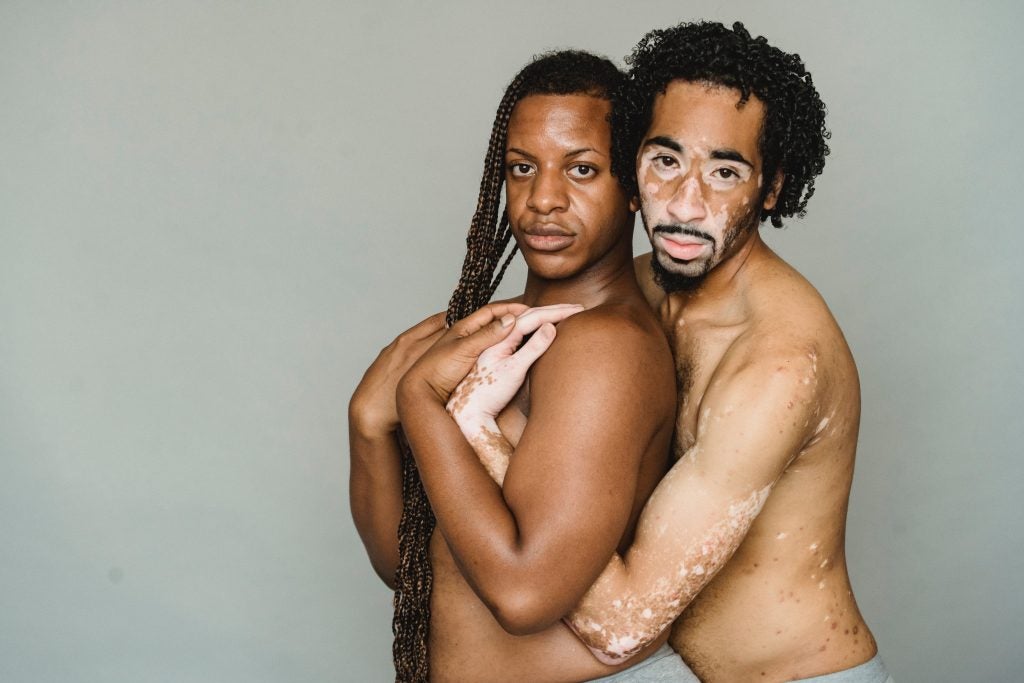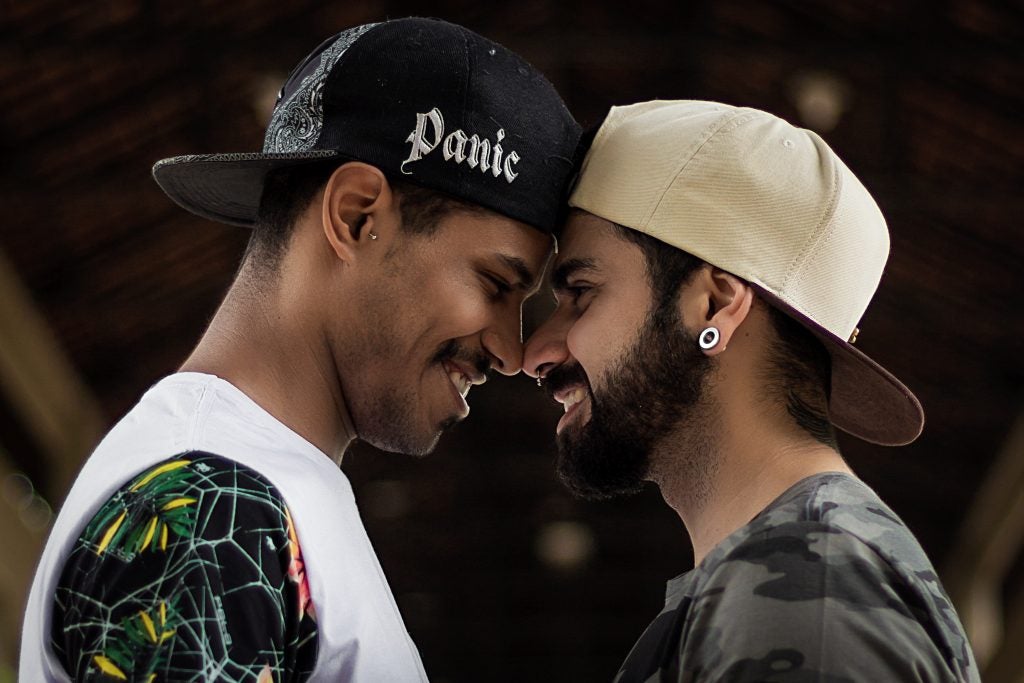Table of Contents
What is homosexuality?

Homosexuality (from the Greek affix “homo,” meaning “same”) is a sexual orientation in which a person, male or female, is sexually attracted to people of the same sex1. People who identify as homosexual may have emotional, sexual, and romantic relationships with people of the same sex3. Typically, a homosexual male identifies as “gay”, and a homosexual female identifies as “lesbian” or a “gay woman.” Furthermore, someone’s identity is independent of their gender identity4.
When discussing a person’s sexuality it is typically best to refer to someone who identifies as homosexual as either gay or lesbian. These colloquial terms are considered appropriate and respectful when speaking casually.
The words “gay” and “lesbian” should only be used to describe a person who identifies as such. The word “gay” should never be used negatively, as this use of language only further contributes to the continued stigma that gay and lesbian people face.
Homosexuality and the Kinsey Scale
The Kinsey scale, as pioneered by the sexologist Alfred Kinsey, organizes sexual behavior on a scale ranging from heterosexual to homosexual1. On this linear scale, 0 represents completely heterosexual behavior; 1 represents predominantly heterosexual behavior and only incidentally homosexual; continuing on to 6, completely homosexual behavior. It is important to note, however, that a person can identify however they please, regardless of their attraction or sexual history. The Kinsey scale is only one of the many ways to understand sexuality, and is a rather outdated and one-dimensional way of labelling sexuality.
The L and G in LGBTQ

Today, gay and lesbian belong to an umbrella term of identities known as “queer.” “Queer” (much like the term “gay”) was originally an insult, and has since been reclaimed by the LGBTQ (Lesbian, Gay, Bisexual, Trans*, and Queer) community. In the U.S. (among many other western countries), there are many LGBTQ communities and groups that facilitate both platonic and romantic connections. People who identify as LGBTQ often face social stigma and are subjected to more negative experiences, making it important for LGBTQ people to connect with each other in order to share stories of survival, support, and growth5.
Lesbian and gay people have been fighting for their rights throughout the twentieth and twenty-first centuries. In July of 2015, same-sex couples in the United States finally won the right to marry. Same-sex couples have the right to marry in twenty-two other countries. However, even same-sex activity (let alone same-sex marriage) is still very much criminalized in many countries.
As mentioned above, LGBTQ people face particular stigmas (homophobia, biphobia, transphobia) which can range from hurtful words to violence and death. In places all over the world (including countries which have a less harmful climate towards queer people), LGBTQ people have faced violence because of their identities or perceived identities5. Often, this prejudice against LGBTQ people comes from traditional or religious ideals, which argue that LGBTQ people’s lifestyles are unnatural. Whether or not this is true, LGBTQ people deserve (as all people do) to live their lives peacefully and safely. Luckily, more and more LGBTQ people and their allies are reaching out to struggling LGBTQ people in order to make a supportive network of queer people all over the world.
Misconceptions
Although societal norms and beliefs have changed greatly in the past century, there are still many negative forces that gay and lesbian people have working against them. These misperceptions may seem harmless, but for someone who is gay or lesbian, they can be extremely hurtful and offensive2. The following are some of the common misconceptions and corresponding facts about gay and lesbian people.
1. Gay people can be turned straight if they pray hard enough.
Sexual orientation is not something that can be changed through praying, therapy, or any other method. Regardless of whether sexual orientation is biological or socialized, it is not something that can be changed through one’s willpower. In fact, programs that attempt to “re-orient” gay people often end up emotionally scarring them rather than helping them.
2. All gay men have anal sex, and lesbians primarily “scissor” when they have sex.
Just as heterosexual people engage in a variety of sexual acts, so do gay and lesbian people. It is rude to presume or ask questions about someone’s sex life, regardless of sexual orientation.
3. Homosexuality is an illness or disorder.
Homosexuality is not an illness. The American Psychological Association does not have homosexuality listed as an illness. Extensive studies on gay and lesbians have shown that gay men and women are psychologically no different than heterosexual men and women.
4. Gay men and lesbian women have many more sexual partners than heterosexuals.
Just as they represent a normal distribution of personalities and psychological makeups, gay men and women are capable of the range of relationship types and styles. Sexual orientation has nothing to do with number of sexual partners.
5. You can spot a gay man or lesbian women by the way they act and dress.
There is really no way to tell if someone is gay or lesbian by just looking at them, since gender presentation has nothing to do with sexual orientation. Generalizing all gay men as “effeminate” and lesbian women as “butch” are hurtful stereotypes that do not represent the range of ways that gay men and lesbian women present themselves.
6. Gay people are not good parents because they will introduce their children to their “lifestyle” and their children will grow up to be gay.
Since being gay has not been proven to negatively influence upbringing or socialization, children raised by same-sex parents are just as likely to be gay as children of heterosexual parents are. Same-sex couples are also just as capable of being good parents as heterosexual people are.
7. Being gay leads to contracting HIV or AIDS.
Since HIV is contracted through bodily fluids (such as blood or semen), heterosexual people are just as likely to contract HIV as homosexual people are. Many gay men do not have HIV, largely because they choose to participate in safe sex.
8. Gay men and lesbian women are attracted to everybody of the same sex.
Just like heterosexual people, gay men and women are not attracted to everyone of their desired sex; that is, gay men and women have preferences, and are not automatically attracted to every person of the same sex.
9. Lesbians seek out same-sex relationships only after having bad experiences with men.
This is sometimes the case, but most of the time is not. Usually, lesbians seek out same-sex relationships because they are attracted to women and not men, not because they have had bad experiences with men. Being lesbian is not a conscious choice.
10. We know what causes sexual orientation.
Though there are many different theories (biological, genetic, psychological, social, etc.) about what causes sexual orientation, none so far have been proven to be the sure deciding factor in a person’s sexual orientation.
Overall, gay and lesbian people deserve to be treated just like everyone else. They come in all shapes and sizes, and their identities (like everyone else’s) should be regarded with respect.

References
- LeVay, Simon, Janice Baldwin, and John Baldwin. Discovering Human Sexuality, Second Edition. Sinauer Associates, Inc., 2012
- “Myths & Facts about Sexual Orientation.” Myths and Facts for Gay, Lesbian, Bisexual, and Transgendered Youth Members of the Boy Scouts of America. Scout Pride. N.p., n.d. Web. 01 Mar. 2016.
- “Sexual Orientation and Homosexuality: Healthwise Medical Information on EMedicineHealth.” EMedicineHealth. N.p., n.d. Web. 01 Mar. 2016.
- Wells, Ken. “Homosexuality and Bisexuality.” Encyclopedia.com. HighBeam Research, 01 Jan. 2006. Web. 01 Mar. 2016.
- “What Is The Meaning Of LGBT?” Mental Help What Is the Meaning of LGBT Comments. N.p., n.d. Web. 01 Mar. 2016.
Last updated 9 March 2016.
